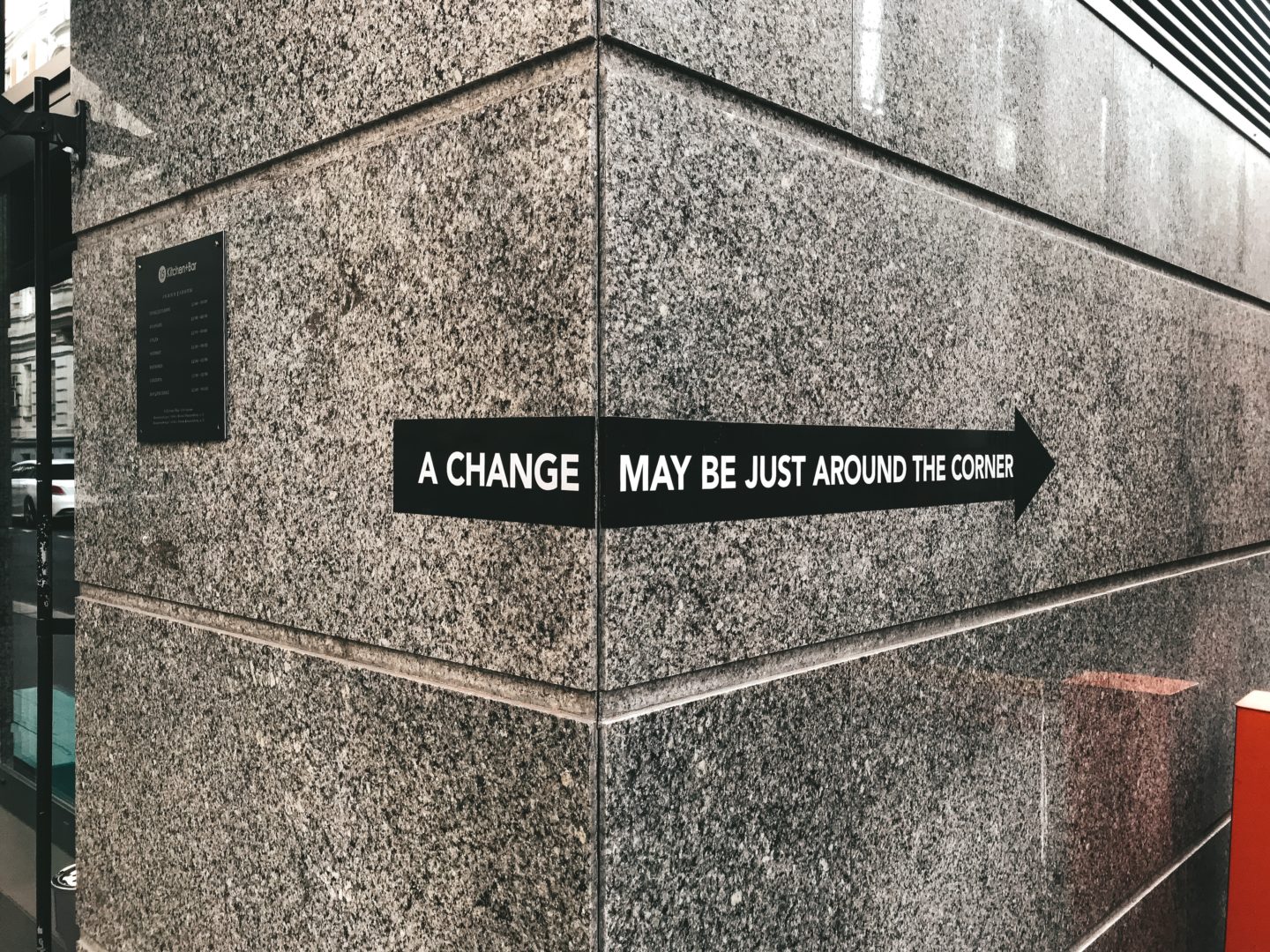
Unexpecting the expected to adapt to a changing world
In volatile, fast-changing, and complex situations, received wisdom and expertise can become a liability that’s hard to overcome. Here are seven ways to change your mindset....
Audio available

by Bettina Büchel Published November 25, 2022 in Leadership • 7 min read
As we have noticed over the past decade, work often happens despite formal organization. As a result, we need to pay more attention to informal organization: the network of relationships that employees form across functions and divisions to accomplish their tasks. It is often these informal networks that can cut through formal reporting lines and jumpstart an activity and meet extraordinary deadlines.
With changes in work practices, which have become more hybrid, remote, and flexible, it has become more challenging to mobilize crucial informal networks in organizations. Remote work during the pandemic has influenced the way people collaborate in organizations, resulting in denser relationships within groups and weaker connections across groups – boosting silo mentality. During change, this makes it more difficult to acquire new knowledge and share information across the entire organization.
According to Yang (2021), people now have fewer bridging ties – ties across functions and divisions – and there was a 40% drop in the share of collaboration time spent with these ties. In addition, building and maintaining relationships is harder when working remotely. The decreased exposure to the social side of workplace relationships, including non-work-related exchanges, social support, and even small talk, often influential in building trust, has made the central nervous system more vulnerable to stress, a lack of organizational commitment, and workplace loneliness. So, if your change initiative is organization-wide and you need to influence behavioral change across functions and divisions, the challenge is now greater.
To help overcome this challenge it can be helpful to use nudging strategies. Thaler and Sunstein (2008) define nudges as any aspect of choice that alters people’s behavior in predictable ways, without forbidding options. Nudges can, on the one hand, help reinforce existing behaviors, or they can help to initiate new behaviors through things like reminders and alerts that spur action. In the context of change, it is this spurring of new behaviors that we so often desire.
Take the example of nudging healthy behavior by indicating on stairs how many calories are burned with each step. This is equally relevant when introducing a new video collaboration system. Most technology introductions require employees to attend training workshops before the technology is used effectively and efficiently. To nudge, you can either offer workshops and ask employees to sign up, or you can auto-enroll employees and then give them the choice to change dates and times. In the second case, you are nudging everyone to participate, but still offering choice. Generally, if you have a choice prepared where employees have to opt in, rather than out, the participation rate will be much lower.
Take another example. In the context of managing your suppliers and their sustainability practices, you are confronted with a number of suppliers that seem reluctant to change their habits. Highlighting their recent performance in comparison to other suppliers might be a way to nudge a low-performing supplier to improve.
In this digital era, it is even possible to nudge an individual towards an expected behavior gradually over time. Some examples of digital nudges include sending reminders in a schedule, benchmarking against others, process checks, or notifications about a failed delivery of a supplier’s goods, etc. By taking away the effort it takes to think about the next task, you are driving behavioral change.
There are two key principles that should guide the creation of nudging strategies: (1) nudges should guide helpful behaviors, and (2) nudges need to protect freedom of choice. Therefore, you always need to think about unintended side effects. If nudges are transparent, in the interests of employees and consistent with their values, then they are not likely to be perceived as manipulative, which otherwise could be the case.
Setting up nudges requires you to understand the message you are sending and how, and to consider the social relationships around you when thinking about how to make it engaging and fun.
The way we receive information has an effect on our decision making. The information we receive first is more significant in our mind than later information as our brains are programmed to remember those things first – the primacy effect. Research has shown that when a political candidate is higher up on the ballot list, the person has a higher chance of being elected than those lower on the list. By the way, things last on the list also get more attention in our brain. This is called the recency effect. Therefore, positioning information in texts, graphics, or videos is important. Since we want certain information to be most remembered, it is important to think about clustering images or text at the beginning or at the end in order for this to stick in people’s brains. Given our limited attention spans, important messages should ideally be early on.

Another way to present information is through framing. Framing consists of mental filters that we use to make sense of the world. The effects of framing are widely known in journalism, as the way information is presented can change the reader’s perception without having altered the actual facts. A frame essentially packages content in such a way that it encourages certain interpretations and discourages others.
Framing incentives and penalties can be used as a nudge to either encourage or discourage behavior. For instance, you can offer a team a bonus for achieving an outcome, but how this is framed matters too. Teams more acutely respond to bonuses posed as losses than comparable bonuses paid as gains. This is because when individuals are presented with negative choices, they exhibit more risk-seeking behavior, while they exhibit risk-averse behavior when presented with positive choices or gains. It is therefore not only important to think about the incentives themselves but how they are presented.
As we are social in nature, we often look to one another to find out how to behave in unfamiliar situations. We assume that collective opinions are wiser than an individual’s view, as we tend to think that if a lot of people are engaged in an activity then there should be a good reason for why that is the case. We see this well-known concept of social proof everywhere. Social media is a good example of where social proof has an enormous impact. Whenever someone has had “more likes” or “more followers” then they are perceived as worth emulating.
If you want to use social proof to encourage training, for example, consider the following: You are aware that all employees should complete IT training to ensure less exposure to cybersecurity attacks. You have several choices: you can threaten employees with punishment for not investing the time into the training, you can offer help for people with difficulties in understanding, or you can tell them that more than 90% have already completed the training. When informed about the high level of completion of the training, most employees will engage in completing the course. This shows that drawing attention to what others are doing can help nudge individuals along.
And finally, ideally the nudge is associated with some fun. The more fun the nudging activity, the higher the level of engagement. We can learn a lot from the gamification industry when deploying fun nudges. For example, we can develop a nudge that allows employees to receive points as a form of reward or badges when a certain number of points have been accumulated. This offers employees a sense of achievement. Levels, which are also often used as a game mechanic, fulfil the motivational need of “status” and can be associated with the completion of certain milestones in your change project. Developing the story around a game is often best done through a challenge, as it is human nature to want to overcome one. Ensure that you have associated the challenge with a goal, as this again helps the sense of achievement. To add a bit of social pressure, you can also introduce the game concept of leaderboards, although this might make it too competitive. If you do intend to develop a challenge or use other elements of gamification, then adding sound or visuals to animate multiple senses is likely to make it even more engaging.
Communicating based on nudging theories is something you can do all the time, but different techniques work at different times. For example, an opt-out training nudge is probably something you might only want to deploy later in your change process. Including nudges with an element of fun will require creativity and investment of time and effort early on but has the potential to help drive up engagement throughout the process. Think of your nudges as creating a wildfire (or snowball effect) – adoption of change moves through the informal network and quickly affects more and more people so that ultimately the change has a lasting impact on the organization.
And remember, no matter what type of nudge you are deploying, you are making changes to the decision-making process by either adding, removing, or adjusting elements that will affect behavior. Remember there is no neutral design – everything has the potential to influence decisions.

Professor of Strategy and Organization at IMD
Bettina Büchel has been Professor of Strategy and Organization at IMD since 2000. Her research topics include strategy implementation, new business development, strategic alliances, and change management. She is Program Director of the Strategy Execution and Change Management open programs, as well as teaching on the flagship Orchestrating Winning Performance (OWP) program.

15 hours ago • by Martin Fellenz in Leadership
In volatile, fast-changing, and complex situations, received wisdom and expertise can become a liability that’s hard to overcome. Here are seven ways to change your mindset....
 Audio available
Audio available
July 8, 2025 • by Alyson Meister, Marc Maurer in Leadership
Marc Maurer shares how ON grew from startup to IPO by defying hype, focusing on purpose, and leading with humility in this candid Leaders Unplugged episode....

July 7, 2025 • by Richard Baldwin in Leadership
The mid-year economic outlook: How to read the first two quarters of Trump...

July 4, 2025 • by Arturo Pasquel in Leadership
Susanne Hundsbæk-Pedersen, Global Head of Pharma Technical Operations at Roche, shares how she has navigated the various pivots in her career, and the importance of curiosity, optimism and energy. ...
Explore first person business intelligence from top minds curated for a global executive audience